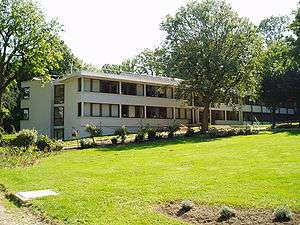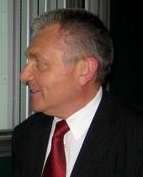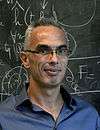Institut des Hautes Études Scientifiques

The Institut des hautes études scientifiques (IHÉS; in English: Institute of Advanced Scientific Studies) is a French institute supporting advanced research in mathematics and theoretical physics. It is located in Bures-sur-Yvette just south of Paris. It is now part of the federal University of Paris-Saclay as an advanced studies institute.
History
The IHÉS, was founded in 1958 by businessman and mathematical physicist Léon Motchane with the help of Robert Oppenheimer and Jean Dieudonné as a research centre in France, modeled on the renowned Institute for Advanced Study in Princeton, United States.[1]
IHÉS explicitly draws inspiration from the model of the Institute for Advanced Study in Princeton (IAS). ... IHÉS adopted its basic characteristics - the intellectual ones - as a high level institute dedicated to basic research - and certain practical ones - such as the tradition of tea being served daily, conducive to exchanges of views. Of equal importance was the relationship between Oppenheimer and Léon Motchane (1900-1990), the founder and first director of IHÉS. As life member of the scientific committee, advisor to the director, frequent visitor and regular correspondent, Oppenheimer played a major role in the crucial early years at IHÉS. ... Oppenheimer and Motchane ... exchanged long letters and short telegrams on all aspects of life at HÉS. ... Visits by Oppenheimer were cleverly orchestrated by Léon Motchane and reported in the press. Oppenheimer’s presence was an event in itself and his coming to lHÉS gave the Institute important official recognition. Oppenheimer was to come to IHÉS three times: from 16 to 19 September 1959, on 17 and 18 October 1961 (in Bures, although the Institute had not moved there yet), and from 14 to 17 May 1963. His last visit, planned for 1965, was cancelled for health reasons.[2]
The strong personality of Alexandre Grothendieck and the broad sweep of his revolutionizing theories were a dominating feature of the first ten years at the IHÉS. René Thom received an invitation from IHÉS in 1963 and after his appointment remained there until his retirement in 1988.[3] Dennis Sullivan is remembered as one who had a special talent for encouraging fruitful exchanges among visitors and provoking a new and deeper insight into their ideas.
The IHÉS runs a highly regarded mathematical journal, Publications Mathématiques de l'IHÉS.
IHÉS celebrated its 50th anniversary in 2008[1][4] and the 40th anniversary in 1998.[5]
Directors
| Image | Name | Timespan |
|---|---|---|
| Léon Motchane | (1958–1971) | |
 | Nicolaas Kuiper | (1971–1985) |
 | Marcel Berger | (1985–1994) |
 | Jean-Pierre Bourguignon | (1994–2013) |
 [6] [6] | Emmanuel Ullmo | (2013–present) |
Mathematics faculty
Some of the top mathematicians who were or are now permanent professors at the IHÉS include Jean Bourgain, Alain Connes, Pierre Deligne, Mikhail Gromov, Alexandre Grothendieck, Oscar Lanford III, Laurent Lafforgue, Maxim Kontsevich, Dennis Sullivan and René Thom. The long-term visitors are Ahmed Abbes, Ofer Gabber, and Christophe Soulé.
Theoretical Physics faculty
The theoretical or mathematical physicists who were or are now permanent professors at the IHÉS are Louis Michel, Jürg Fröhlich, David Ruelle, Thibault Damour, Nikita Nekrasov, and Vasily Pestun.
References
- 1 2 "On the occasion of receiving the Seki Takakazu Prize" (PDF). Mathematical Society of Japan.
- ↑ IHES – Oppenheimer and IHÉS (1958-1967)
- ↑ edited by Lawrence D. Kritzman, Brian J. Reilly. The Columbia History Of Twentieth-Century French Thought. Columbia University Press. p. 665.
- ↑ Jackson, Allyn. "Grothendieck at 80, IHES at 50" (PDF). American Mathematical Society. Retrieved 2008. Check date values in:
|access-date=(help) - ↑ Jackson, Allyn. "The IHÉS at Forty" (PDF). American Mathematical Society. Retrieved March 1999. Check date values in:
|access-date=(help) - ↑ (French) Official web site Retrieved 3 December 2013.
| Wikimedia Commons has media related to Institut des hautes études scientifiques. |
Coordinates: 48°41′42″N 2°10′09″E / 48.694954°N 2.16908°E